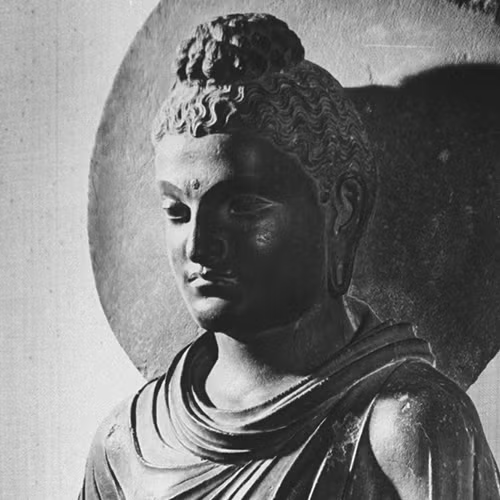
Table of Contents
Who Was Buddha?
Buddha, originally named Siddhartha Gautama, was a renowned teacher, philosopher, and spiritual leader, recognized as the founder of Buddhism. He is believed to have lived and taught in the region that encompasses modern-day Nepal and India between the 6th and 4th centuries B.C.
The term “Buddha” translates to “the awakened one” or “the enlightened one.” While there is scholarly consensus regarding the historical existence of Buddha, the precise dates and events of his life remain subjects of debate among historians.
The most widely accepted narrative of his life recounts Siddhartha Gautama’s quest for understanding through various teachings over many years, none of which resonated with him. Ultimately, he experienced a pivotal night of deep meditation beneath a sacred tree, during which he attained profound insight and clarity. This transformative experience led him to achieve full awareness, marking his emergence as the Buddha.
Early Life
Buddha, also known as Siddhartha Gautama, is believed to have been born in the 6th century B.C., with some scholars suggesting a birth date as early as 624 B.C. and others proposing as late as 448 B.C. Most agree that he was born in Lumbini, present-day Nepal, into the Shakya clan. Archaeological discoveries in 2013 revealed a tree shrine in Lumbini predating other Buddhist shrines by approximately 300 years, reinforcing the notion of a 6th-century B.C. birth.
Siddhartha Gautama
Siddhartha, which means “he who achieves his aim,” was the son of a Shakya ruler. His mother passed away just seven days after his birth, and a holy man foretold his remarkable destiny: he could become either a great king or military leader or a great spiritual leader. To shield Siddhartha from the harsh realities of life, his father raised him in luxury, isolating him from knowledge of religion, human suffering, and the external world.
According to tradition, Siddhartha married at the age of 16 and soon had a son. However, his life of seclusion continued for 13 more years.
Siddhartha in the Real World
Upon reaching adulthood, Siddhartha had little experience of the world beyond the palace. This changed when he ventured outside with a charioteer, where he encountered an elderly man and learned about the inevitability of aging. This revelation sparked a series of explorations, leading him to witness a sick man, a decaying corpse, and an ascetic. The charioteer explained that the ascetic had renounced worldly pleasures in search of liberation from the fear of death and suffering.
Deeply affected by these realizations, Siddhartha, at the age of 29, renounced his royal life, leaving behind his kingdom, wife, and child in pursuit of a path that could alleviate the universal suffering he had come to understand.
The Ascetic Life
Siddhartha adopted an ascetic lifestyle for the next six years, immersing himself in the teachings of various spiritual masters. He practiced with a group of five ascetics, whose admiration for his dedication led them to follow him. Despite his rigorous efforts, including extreme fasting and self-denial, Siddhartha struggled to attain the insights he sought. It was only after a young girl offered him a bowl of rice that he recognized the futility of corporeal austerity. Understanding that such harsh conditions did not facilitate spiritual release, he accepted the nourishment and resumed a more balanced approach to life.
The five ascetics, perceiving this as a abandonment of his asceticism, chose to part ways with him.
The Buddha Emerges
That night, Siddhartha sat beneath the Bodhi tree, vowing not to rise until he uncovered the truths he sought. For several days, he meditated, reflecting on his life and previous existences. During this period, he confronted Mara, an evil demon who attempted to dissuade him from attaining enlightenment. In a pivotal moment, Siddhartha touched the ground, asking the Earth to bear witness to his enlightenment, which subsequently banished Mara.
Through this profound meditation, Siddhartha began to perceive the interconnectedness of all existence and finally grasped the nature of suffering, leading to his awakening as the Buddha.
Teachings
Upon achieving enlightenment, the Buddha initially hesitated to share his newfound knowledge, feeling that it was beyond verbal expression. According to legend, Brahma, the king of gods, encouraged him to teach. He journeyed about 100 miles to reunite with the five ascetics, guiding them toward a path of moderation known as the Middle Way, which steered clear of both extreme asceticism and hedonistic indulgence.
In his first sermon, famously termed the Setting in Motion the Wheel of the Dharma, the Buddha articulated the Four Noble Truths and the Eightfold Path, establishing the foundational tenets of Buddhism. The ascetics became his first disciples, laying the groundwork for the Sangha, a community of monks that welcomed all individuals, regardless of class, race, or gender, as long as they were committed to overcoming suffering and achieving enlightenment.
For the remainder of his life, the Buddha traveled extensively, teaching the Dharma to others and guiding them on their spiritual journeys.
Death
The Buddha passed away around the age of 80, likely due to an illness from consuming spoiled food. Before his death, he advised his disciples to rely on their own understanding, stating, “Be your own light.” The Buddha’s influence is profound, shaping not only the course of Buddhism but also impacting a wide array of other religions, philosophies, and cultural expressions across the globe.
